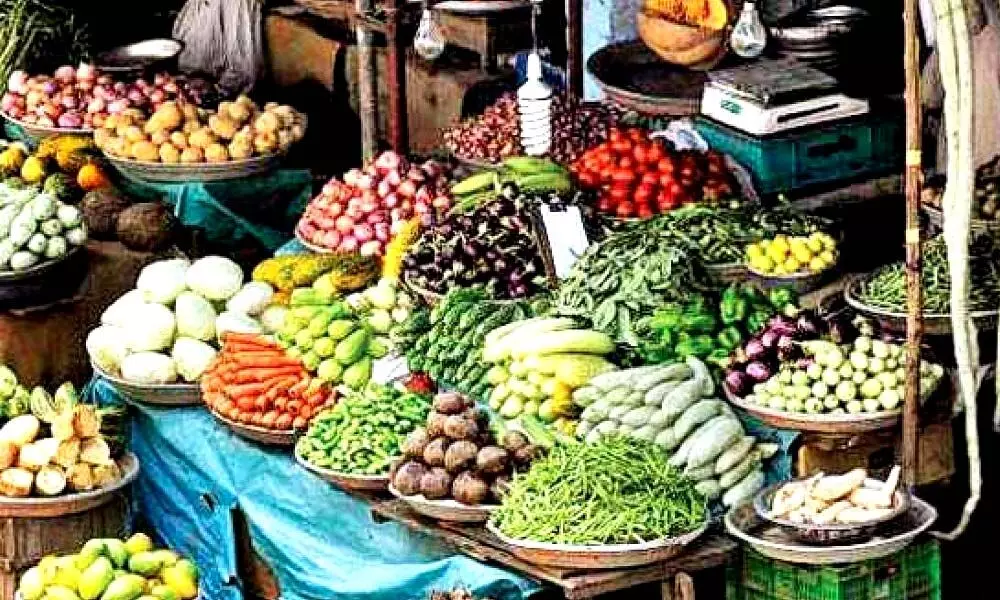Rising veggie prices may lead to rate hike in the future
July inflation zoomed to a 15-month high, led mainly by a surge in vegetable prices. However, the core CPI inflation provided some respite with a reversion to sub-5 per cent levels after three years.
image for illustrative purpose

July inflation zoomed to a 15-month high, led mainly by a surge in vegetable prices. However, the core CPI inflation provided some respite with a reversion to sub-5 per cent levels after three years. The only worry at the moment is that if the current trend of soaring vegetable price hike continues, then one may see a rate hike in the near future. CPI inflation in July surged to 7.4 per cent and increased 2.9 per cent sequentially. The sequential increase was led by vegetables. Vegetables, as a whole, contributed to nearly 32 per cent of CPI inflation. That apart, cereals, pulses and spices, as per Kotak report, contributed to the sequential surge. However, CPI inflation, excluding vegetables, was at 5.4 per cent. In August, high frequency data points to some softening in vegetable prices though cereals, pulses and oils have risen. July core inflation moderated 22 bps to 4.9 per cent, a reason to worry. However, it increased 0.4 per cent sequentially. This pick-up was led by costs towards education, recreation and amusement and health-related aspects.
Incidentally, until early August there were no signs of any sequential moderation in food prices. But government intervention has helped pick up pace in cereals and even helping in an improved availability of onions and tomatoes. The ongoing food price shock has put material risk, as per a Emkay study, to the RBI’s CPI forecast. While this could pressure the RBI amid their inflation management mandate, this may not change RBI's perspective on inflation on net. Barring food and beverages, pan, tobacco and intoxicants, inflation in all other groups eased in July vis-à-vis June, offering some relief. The data for food prices for early August is not very promising, though and Icra expects headline CPI inflation to print above the 6.5 per cent mark in August, before cooling off materially in September.
Given the CPI inflation print for July, MPC's revised forecast for inflation for Q2 of 6.2 per cent appears to be at risk of being overshot, as the vegetable price shocker may not reverse adequately before the next harvest. Moreover, rainfall has been deficient in this month, which is likely to put upward pressure on food prices, amid the lags in kharif sowing of some crops. MPC's latest forecasts suggest that inflation will remain above 5 per cent through Q1. Erratic monsoons over the past months have resulted in steeper-than-expected surge in the prices of vegetables. This is reflected in the food and beverage inflation, which rose to 10.57 per cent during the month from 4.6 per cent in the previous month. Vegetable prices are expected to stay elevated for quite some time, though fresh market arrivals may help cool down the prices to some extent. In any case, we should be ready for a rate hike in the days to come, depending upon the continuity in soaring prices of vegetables.

